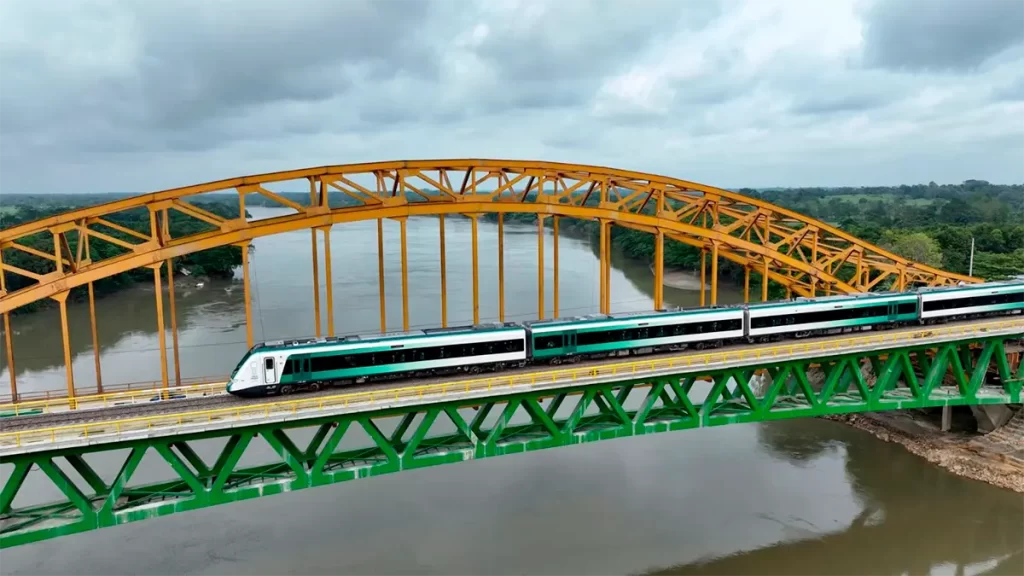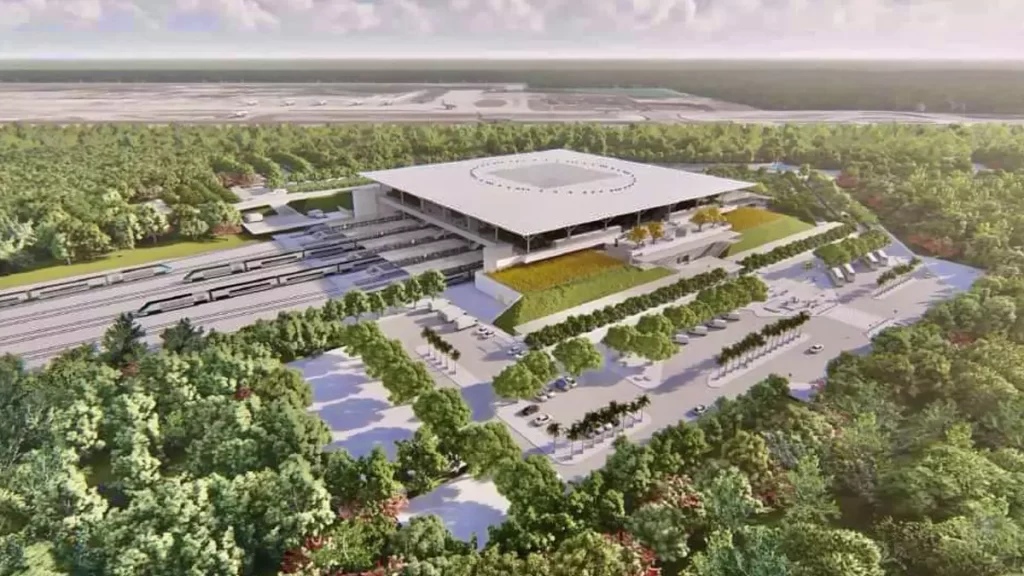Boca del Cerro Mayan Train Station: The Definitive Tourist Guide
The Boca del Cerro Station in Tabasco is located in a nest of natural wonders and ancestral legacy, the second train station is emerging as an unmissable stop on the Mayan Train route.
Located at the confluence of the jungle and the Usumacinta River, this station is not only a starting point for adventures, but a destination in itself, offering an amalgam of culture, history and natural landscapes that captivate each visitor.
What to do in Boca del Cerro?
- Pomoná Archaeological Zone: A journey through time awaits you in Pomoná. Explore the ruins of this ancient Mayan city, where each stone tells a story of power, faith and architectural sophistication.
- Boca del Cerro Bridge: Marvel at the contemporary engineering on the imposing bridge that crosses the Usumacinta. A perfect place to watch sunsets that dye the river in golden and crimson tones.
- Santa Margarita: Immerse yourself in the tranquility of this small paradise. The clear, cool waters are the perfect escape from the bustle and heat, offering a haven of peace and freshness.
- La Isla, Tenosique: Discover the rich biodiversity of the region on this island, where nature coexists in harmony and offers an unparalleled spectacle of flora and fauna.
Hotels in Boca del Cerro
- Hotel Frances: Enjoy hospitality and comfort in this hotel that mixes tradition and modernity, ideal for relaxing after a day of exploration.
- Hotel Central: Strategically located, this hotel is the ideal starting point for your adventures in Boca del Cerro, offering top-notch comfort and service.
- Hotel Hacienda Tabasqueña: Live the experience of an authentic hacienda, with all the modern comforts, immersing yourself in the history and culture of the region.
- Hotel La Roca: Find in this hotel a haven of peace, with impressive views and a service that will make your stay an unforgettable experience.
- Hotel Luz de Luna: Let yourself be enveloped by the cozy atmosphere of this hotel, where every detail is designed to guarantee your comfort and well-being.
Transfers in Boca del Cerro
Exploring Boca del Cerro and its surroundings is easy thanks to the transfer options available. From local taxi services to organized tours, you’ll find the perfect way to get around and discover all the secrets this region has to offer.
Car Rental in Boca del Cerro
For those who prefer independence, car rental is a convenient option. Drive at your own pace, creating a personalized adventure that will take you from the depths of the jungle to the banks of the Usumacinta River.
An Unforgettable Trip through Boca del Cerro
The Mayan Train Station in Boca del Cerro is more than a point on the map; It is a portal to a world where ancient history and natural beauty intertwine in spectacular ways.
Whether you’re looking for adventure, relaxation, or a deep cultural immersion, Boca del Cerro promises to be a highlight on your Mayan Train trip through southeastern Mexico.
With each activity, hotel and service available, your stay will be not just a trip, but a transformative journey that will connect you with the very essence of Mexico.

Similar news to Boca del Cerro Mayan Train Station:
- Boca del Cerro Mayan Train Station: The Definitive Tourist Guide
- Palenque Mayan Train Station: The Definitive Tourist Guide
- Mayan Train Station in Cancun Section 5 North
Ad by Tren Maya
R. Tren Maya
Not what you’re looking for?
try a search











Subscribe to be able to comment and be part of the community.